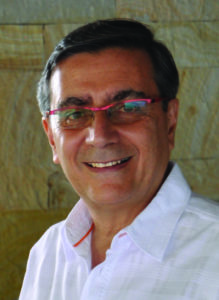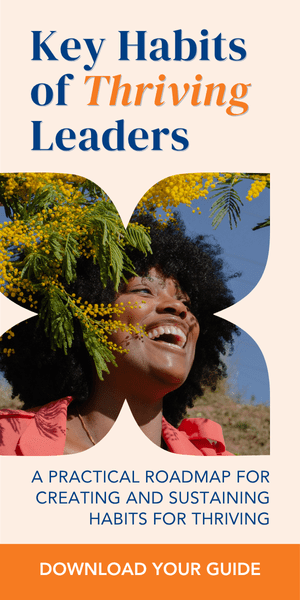 Over a steaming hot cup of tea, I recently read the 2014 Global Spa & Wellness Economy Monitor, one of the first reports to put its arms around the magnitude of the wellness economy worldwide. The major insight? “Wellness is now a staggering $3.4 trillion market – and one of the biggest, fastest-growing industries on earth.” For comparison, this means the global wellness economy is a “3.4 times bigger market than the $1 trillion, global pharmaceutical industry.” Wellness has finally arrived.
Over a steaming hot cup of tea, I recently read the 2014 Global Spa & Wellness Economy Monitor, one of the first reports to put its arms around the magnitude of the wellness economy worldwide. The major insight? “Wellness is now a staggering $3.4 trillion market – and one of the biggest, fastest-growing industries on earth.” For comparison, this means the global wellness economy is a “3.4 times bigger market than the $1 trillion, global pharmaceutical industry.” Wellness has finally arrived.
It was exactly this topic that I so enjoyed in my conversation with Dr. Gerry Bodeker, this week’s Face of Wellbeing Leadership. Gerry is Adjunct Professor of Epidemiology at Columbia University’s Mailman School of Public Health and Chair of the Global Initiative for Traditional Systems of Health in Oxford, England. He holds a research appointment in the Department of Primary Health Care Sciences at Oxford University and is a Trustee of Oxford Project Southeast Asia.
Besides being a thought-leader in the wellness movement, he’s been on his own wellbeing journey since the early 1970’s, from experimenting with a “back to the land” community in Australia and pursuing doctoral studies in international public policy at Harvard to the vegetarianism, Transcendental Meditation and yoga practices he lives today. His work to bring light to the cultural traditions of wellness draws from over 20 countries including Southeast Asia, North Africa, Sub-Saharan Africa and Eastern Europe; his research into the Islamic traditions of wellness was featured among the Top 10 Trends by Spafinder Wellness 365 (Trend #3).
Renee: Why focus on the cultural traditions of wellness?
Gerry: I’ve come to realize that all cultures have encoded in their ways of living clear dietary, exercise, and other health practices that are deeply familiar to them. When you look at these practices closely, you realize that they are about promoting wellbeing. They offer culturally familiar and sometimes quite important pathways for those societies to live a healthy life in an often unhealthy world. Drawing on those traditions to understand and promote wellness today has been a driving passion for me.
Renee: How is your work playing out?
Gerry: An example happened just today. I had a visit from a very prominent Muslim Chinese doctor from Ningxia in western China. He’s received a lot of recognition for his work on medicine of the Silk Road, a synthesis of Persian and Chinese perspectives, and an interesting blend of Taoist philosophy, Arabic medical science, and Islamic precepts of health. He proposed that we work together to promote medicine of the Silk Road for the wider Islamic world and beyond. I’m inviting him to not just focus on the practices of treating illness, but also encouraging wellness.
Most Traditional Chinese Medicine known about in the Western world is very medical, very medicinal, very clinical. It ignores a rich tradition of what I call ”TCW,” Traditional Chinese Wellness.
Medical systems were once steeped in a cultural background of what it means to be healthy, yet we’ve forgotten about those wellness traditions.
Just consider, in ancient times local doctors in China and India were only paid when the community was healthy. Yet when you say to today’s doctors, “What did those doctors do to keep people healthy?”, there is a blank response. They only know what to do when people are sick. So I advise them to find out what local doctors and communities did to help people stay healthy. What did they put in the food? How did they prepare it? How did they keep the air clean? What did they do for exercise? Most cultures have a notion about what’s ideal for health and wellbeing, and this is the lost bedrock from which medicine comes.
Renee: Why spend time uncovering these traditional wellness practices?
Gerry: We must do this kind of epistemological archeology. We have to uncover and recover a culture’s wellness practices, and more importantly, start re-using those practices. Because our world needs them. We’ve got a big burden of lifestyle diseases, and not everyone is going to have the access or motivation to start the popular Mediterranean diet or to jog as a way of combating these diseases. And I believe people will be more successful at living a healthy life when they follow their own deep traditions.
Renee: It’s gratifying to hear you speak about such a profound honoring of traditional wellness systems. It also seems that this could potentially be strengthened by two other trends: 1) the personalization of medicine and 2) digital health. (See more about these trends in our blog, The Future of Healthcare: Through the Eyes of a Visionary.) It makes sense to me that when people eat, live, move, and connect in a way that respects their unique culture, it will better fit their unique physiology.
Gerry: That’s a very correct observation. If you look at Southeast Asia with its roots in Traditional Chinese Medicine and Ayurveda, you find that the concept of personalized medicine based on genotypes is at the core of the diagnostic and prescriptive framework. For instance, Ayurveda offers the use of pulse – not the radial pulse as in Western medicine but three major pulse points, sub-points and then sub-sub-points. This depth of information helps the doctor identify what kind of disease is expressing in the person based on his or her unique physiological type, as well as what guidelines – practices drawn from the person’s culture – might restore health for that person. It’s a very deep and well-established framework of personalized healthcare.
Systems of medicine and wellness such as Ayurveda have historically been tapping into a deep level of physiological understanding and differentiation that the West is only just beginning to catch up to. So I believe understanding wellness traditions and health epistemologies from non-western countries offers insights that can not just provide useful medicines, but can totally transform our understanding of the way human physiology works and the energetic basis of wellbeing.
Renee: If you and I were in a helicopter looking down on the global shift toward wellness, what do you believe is enabling and limiting this shift?
Gerry: Both of those dimensions – enablers and limitations – are there. What’s enabling the shift is that people aren’t waiting for high standards of evidence-based medicine before they start doing things that are important for their own wellbeing. There’s a sea change in how people are thinking about their health. It varies from culture to culture, continent to continent, economic level to economic level. But generally, people are spending a lot more on wellness than health systems are spending on illness. Our helicopter really has to fly pretty high to see just how big this is. It is mega, and it’s growing faster than the sort of growth rate of most other sectors.
Renee: Why do you think it is growing faster than other sectors of the economy?
Gerry: Income and education are key. We know that as people become more educated and affluent, they will spend more of their disposable income on their health and wellness care. So, enabling the global wellness movement is affluence, education, access to knowledge and information particularly online, and a motivation by people to not deteriorate unnecessarily – to do what they can to optimize their chances of a longer and healthier life.
Renee: What is limiting the shift toward wellness?
Gerry: What’s preventing the wellness trend, I think, is that these choices aren’t filtering down the socio-economic scale. As one example, how much wellness curriculum is there in the inner city schools? If there is such curriculum, does it connect with the hard reality many inner city kids live in? Some schools in California have been teaching yoga to promote wellness for kids, yet have been sued by religious groups for promoting Indian philosophy and spirituality. So the whole subject of wellness is complex. There are inhibitors as well as enablers.
All that said, you look at that $3.4 trillion dollars a year now making up the global wellness industry, and you have to assume that this is a sea change. That’s our helicopter view.
Renee: I love it. You’re one of the few people I have spoken with that is thinking in terms of the future of wellness, yet also appreciating the knowledge and practices cultures have used for promoting health and wellness in the past. You are modernizing wellness traditions.
Gerry: Yes, my hope is that we make the traditions of wellness more contemporary and relevant for every generation.
READ MORE
- Hallmark Exec Patti Streeper: Work-Life Balance Is Dead. But Wellbeing Is Alive and Well
- What Does Visionary And SVP At Everyday Health Clare Martorana Have To Say About The Future Of Healthcare?
- What Actors, Authors, and Execs Have To Say About Befriending Your Goals
- Are Your Goals Enhancing Or Eroding Your Wellbeing?






